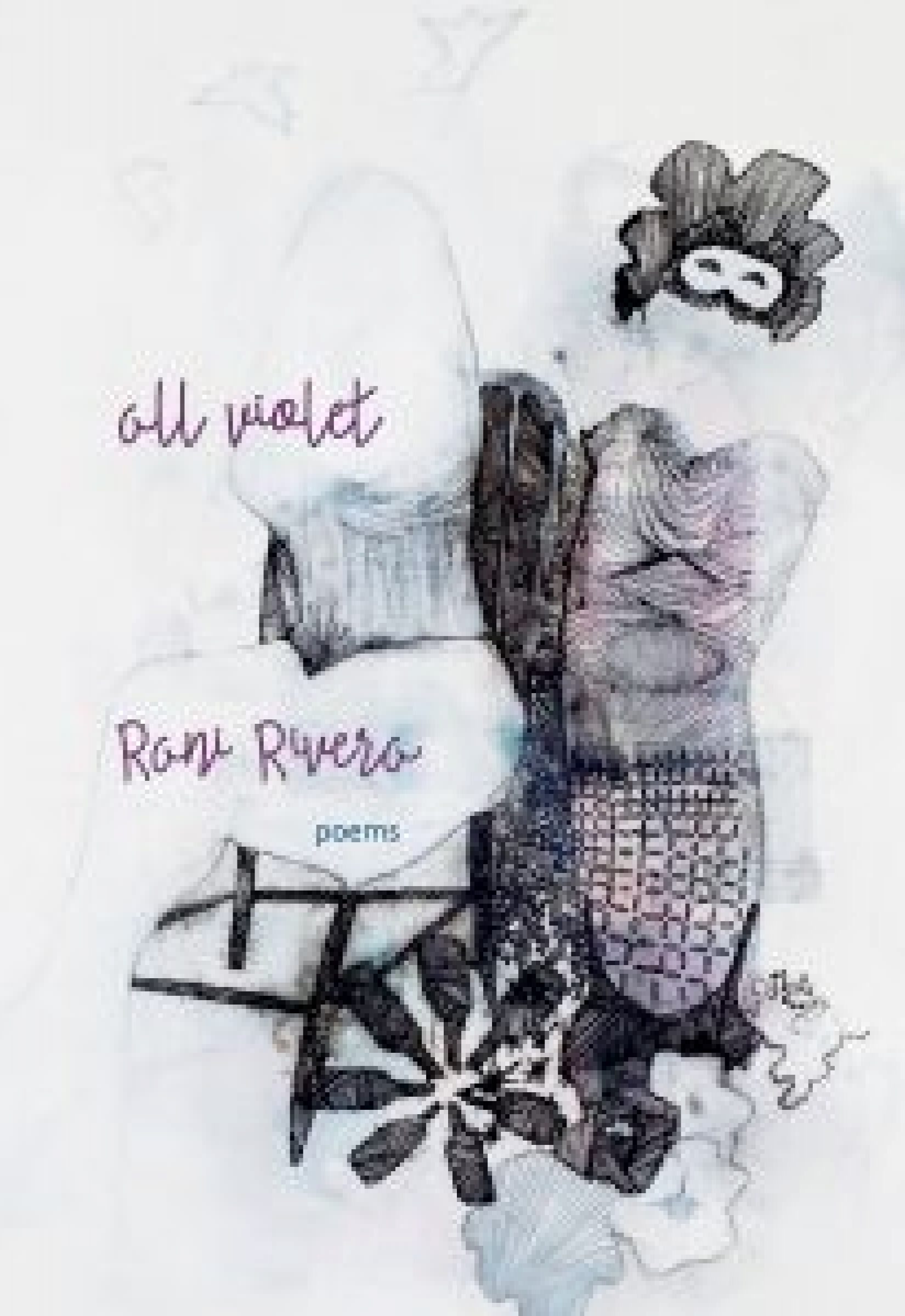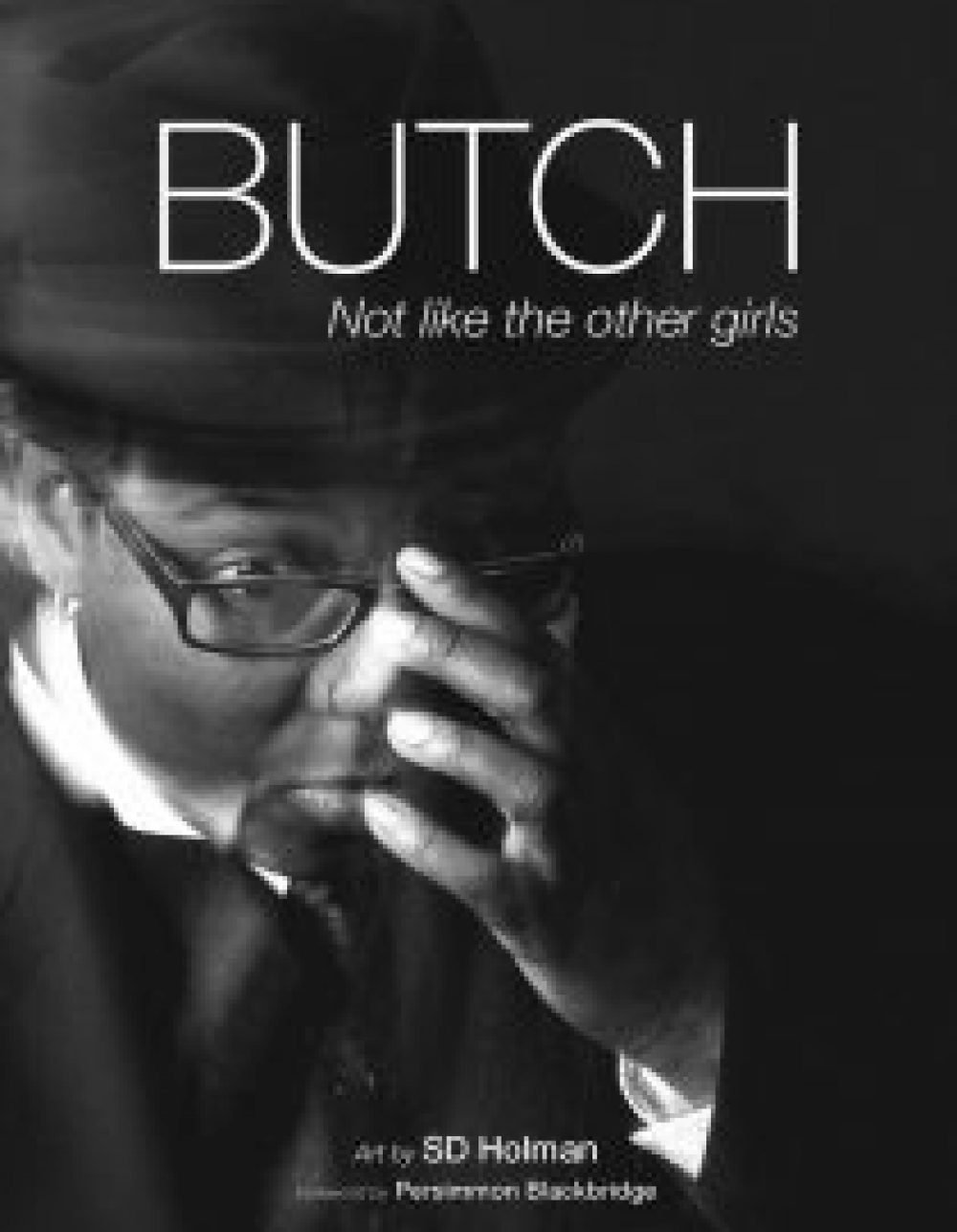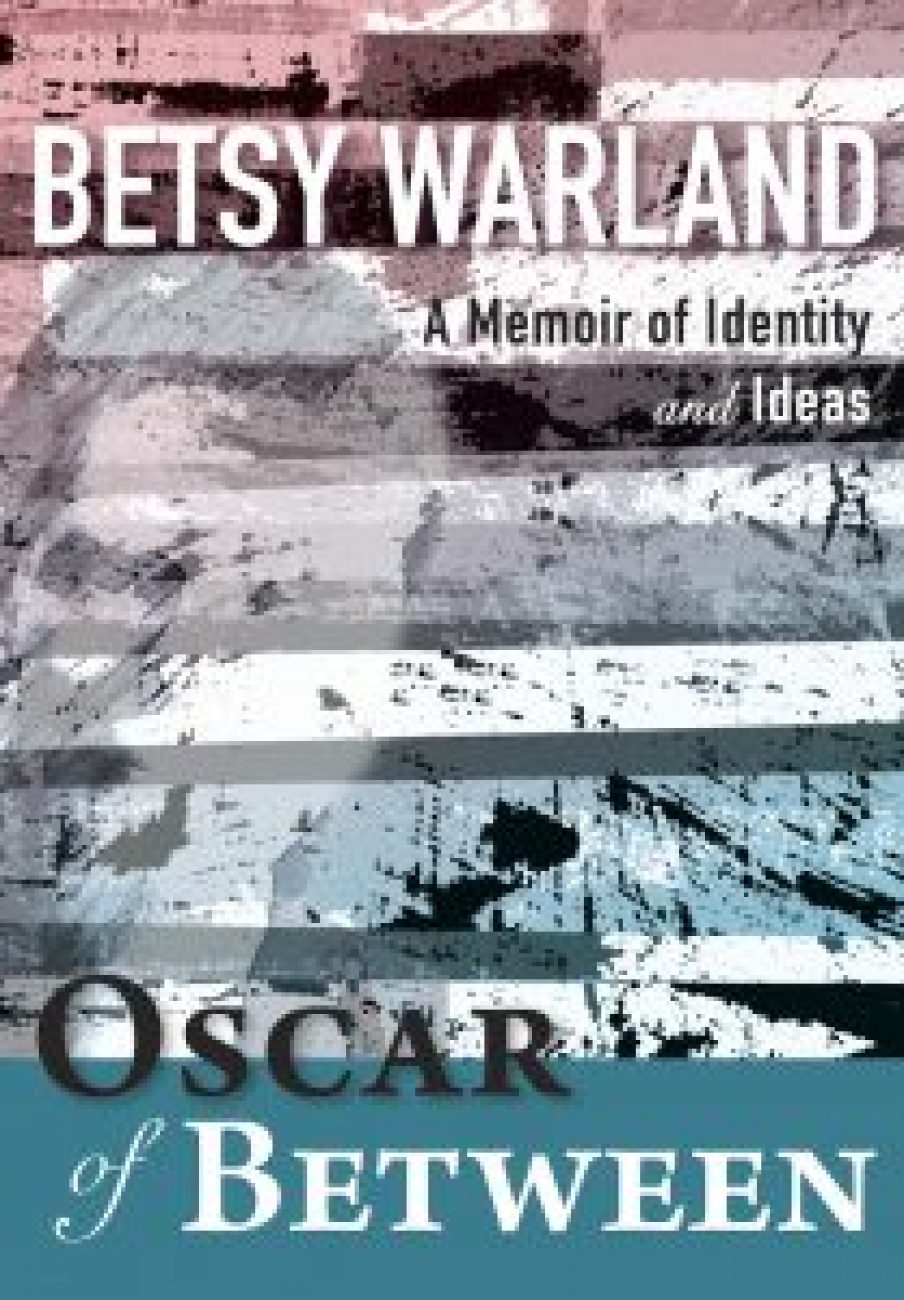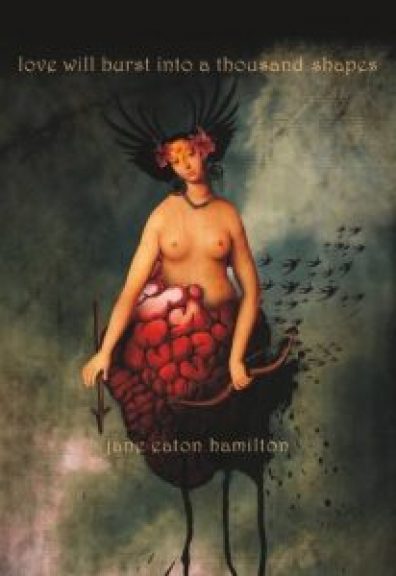
All Violet
In All Violet, a young woman chronicles the experience of living on the margins, in spaces and places where body and mind are flayed by guilt, disappointments and betrayals. Her poems record the shattering trauma of struggling to survive through periods of doubt, fear, rage and pain, creating a narrative of disconnection, indignation, alienation and emptiness, the extremes of suffering and desperation.
Employing lyrical free verse, Rani Rivera has skillfully employed the short line to pinpoint moments of acute perception.
Unadorned, taut and precise cries of pain, loss and fury draw the reader deeper and deeper inside this in-your-face confrontation with a dark world of foreboding alleviated by flashes of mordant wit and grace under fire.

Butch: Not Like the Other Girls
Butch: Not Like the Other Girls is a photographic exploration of the liminal spaces occupied by female masculinity in contemporary communities. Its first incarnation exhibited as a public art project in transit shelters around Vancouver in March-April 2013, with a simultaneous gallery show at the Vancouver East Cultural Centre (the Cultch). According to Cultch administrators, the opening night (which attracted over 500 attendees and spilled out into the street for half a block) was the largest visual art opening in their 35-year history. The project caused an internet sensation, generating thousands of posts and shares on social media, blog posts as far away as Germany and Denmark, and interest for further exhibitions across Canada and the United States.
This project delineates Butch as an inclusive site of resistance to limitations on the way women, gender, and sexuality are still defined. The images honour the beauty, power, and diversity of women who transgress the gender binary, interspersed with text written by the photographic subjects themselves. The transversal dialectic of female masculinity is celebrated here — unapologetic and undiluted.
The author positions Butch as intrinsically queer. They explore the complex and contradictory natures of butch, “glorying in our mercurial and perhaps sometimes confusing natures.” Butch not only forces a reassessment of the body and the queer subject, it dismantles socialized, role-defined, gender appropriate behaviour. The queer cultures in which Butch is situated are constantly changing, and the author captures a diverse range of portrayals that celebrate and reflect butch identities. In the context of transgender movements, intersex activism, and genderqueer dialogues, a project like Butch on picturing and mirroring butch finds an important place.

What the Mouth Wants: A Memoir of Food, Love and Belonging
This mouthwatering, intimate, and sensual memoir traces Monica Meneghetti’s unique life journey through her relationship with food, family and love. As the youngest child of a traditional Italian-Catholic immigrant family, Monica learns the intimacy of the dinner table and the ritual of meals, along with the requirements of conformity both at the table and in life. Monica is thirteen when her mother is diagnosed with breast cancer and undergoes a mastectomy. When her mother dies three years later, Monica considers the existence of her own breasts and her emerging sexuality in the context of grief and the disintegration of her sense of family.
As Monica becomes an adult, she discovers a part of her self that rebels against the rigours of her traditional upbringing. And as the layers of her sexuality are revealed she begins to understand that like herbs infusing a sauce with flavour, her differences add a delicious complexity to her life.
But in coming to terms with her place in the margins of the margins, Monica must also face the challenge of coming out while living in a small town, years before same-sex marriage and amendments to the Charter of Rights and Freedoms created safer spaces for queers. Through risk, courage, and heartbreak, she ultimately redefines and recreates family and identity according to her own alternative vision.

Acquired Community
Jane Byers’ Acquired Community is both a collection of narrative poems about seminal moments in North American lesbian and gay history, mostly post-World War II, and a series of first person poems that act as a touchstone to compare the narrator’s coming out experience within the larger context of the gay liberation movement.
The “parade” poems such as “Celebration Was a Side Effect, 1992” explores the important role parades have played in the queer movement and how they have transformed from activism to celebration. “St Patrick’s Day Parade, 2014” takes the Boston St. Patrick’s Day committee’s homophobia to task, reminding us that this is not ancient history, but an ever-transforming experience. In her long poem, “Keen,” Byers imagines a dialogue between a young queer university student and Michael Lynch, an AIDS activist, poet and scholar who helped found many gay community institutions. In this compelling poem we are reminded that the AIDS epidemic had a rippling effect, touching the lives of everyone within the gay community and well beyond.
In this second book by Byers her poems go beyond the historical perspective of LGBT rights and are living examples of progress. Acquired Community examines and celebrates community resilience.
— Winner of the 2017 Goldie Award for Poetry

Flight Instructions for the Commitment Impaired
“Wanted: lesbian couple to foster wonderful eleven-year-old African American boy with gender identity issues.”
Meet Antwan. Not only has he got gender issues, he’s severely emotionally disturbed, severely demanding and, as he puts it, “born to argue.”
In the late nineties, Nicola Harwood and her girlfriend moved to San Francisco in order to be at the epicentre of queer culture. Shortly after arriving, they encountered an ad posted in the SF Bay Times looking for lesbian foster parents. Impulsively, they decided to answer the ad and offer to foster Antwan, an eleven-year-old transgender child* who had been living in group homes since the age of six. Suffering from post-traumatic stress, numerous disabilities and behaviour issues, Antwan turns out to be not only a severely challenging child, but also an irrepressibly honest and funny one.
The sex-positive butch/femme couple, new to foster parenting but confident in their skills and experience as queers, start introducing Antwan to their gay world–including Gay Pride in the Castro, shopping for female clothing among the flash and extravagance of their Latino neighbourhood thrift stores, accompanying him to the queer youth dance club and supporting the emergence of his female identity.
But being queer is only part of who Antwan is, and the couple are soon faced with the reality that his behaviours may be more than they can handle. They become a part of the “system,” working with over-burdened social workers, therapists, group home workers, special needs school teachers, psychiatrists and foster care agencies, all trying to help Antwan succeed outside the group home. Antwan, however, is oblivious to the massive amount of funding and attention being paid to him and just wants the couple to buy him more outfits and watch him perform as Britney Spears singing “…Baby, One More Time.”
While Antwan is introduced to the gay world of San Francisco, the white couple is introduced to his black world of Oakland. As the relationship develops, members of Antwan’s birth family, many of whom he has not seen or heard from in years, begin to emerge. It turns out that Antwan isn’t the only big queer in his family. One of his sisters is a baby dyke, and his troubled mother, who shows up when Antwan is thirteen, wears the strut of an old-school butch.
Outrageous, sad and very funny, Flight Instructions for the Commitment Impaired follows the couple as they attempt to build a relationship with Antwan and his world. As the three start to connect across an abyss of trauma and abuse, a relationship develops that challenges each of their notions of race, family and commitment.
Note about pronouns: Antwan has asked that we use male pronouns when referring to the time before she transitioned at the age of seventeen.

Oscar of Between: A Memoir of Identity and Ideas
In 2007, at the age of sixty, Betsy Warland finds herself single and without a sense of family. On an impulse, she decides to travel to London to celebrate her birthday, where she experiences an odd compulsion to see an exhibit on the invention of military camouflage. Within the first five minutes of her visit, her lifelong feeling of being aberrant reveals its source: she had never learned the art of camouflage.
This marked the beginning of Oscar of Between: A Memoir of Identity and Ideas. Taking the name Oscar, she embarks on an intimate, nine-year quest by telling her story as “a person of between.” As Oscar, she is able to make sense of her self and the culture that shaped her. She traces this experience of in-betweenness from her childhood in the rural Midwest, through to her first queer kiss in 1978, divorce, coming out, writing life. In 1984, she and her lover wrote lesbian erotic love poetry collections in dialogue with one another, the first and only tandem collections on this subject in English Canada. After the two split, she experienced years of unacknowledged exclusion from a community in which she thought she belonged.
In the process of writing Oscar’s story, Warland considers our culture’s rigid, even violent demarcations as she becomes at ease with never knowing what gender she will be addressed as: “In Oscar’s daily life, when encountering someone, it goes like this: some address her as a male; some address her as a female; some begin with one and then switch (sometimes apologetically) to the other; some identify Oscar as lesbian and their faces harden, or open into a momentary glance of arousal; some know they don’t know and openly scrutinize; some decide female but stare perplexedly at her now-sans-breast chest; some are bemused by or drawn to or relate to her androgyny; and for some none of this matters.”
A contemporary Orlando, Oscar of Between extends beyond the author’s personal narrative, pushing the boundaries of form, and by doing so, invents new ways to see ourselves.

He Leaves His Face in the Funeral Car
He Leaves His Face in the Funeral Car is elegiac, lyrical, ironic; a series of reflections, recollections; a collection about relationships—to family, clocks, water, trees, ungulates, endings—recognizing that not all relationships are straightforward: a mother’s secret false teeth, a teakettle riddled with bullet holes, pears and small knives. To leave a face in the funeral car is to fall out of time, to fall into history, to ponder the meanings of dust, the quiet records of suicide. This is poetry that covers a broad range, wide and changing, the strangeness of everyday life buoyed by the solace of language, the pleasure of song. Each word in its right place, each poem reflecting beyond surface meaning.

For Your Own Good
In the canon of contemporary feminist and lesbian poetry, For Your Own Good breaks silence. A fictionalized autobiography, the poems in this collection illustrate the narrator’s survival of a domestic and sexual violence in a lesbian relationship. There is magic in this work: the symbolism of the Tarot and the roots of Jewish heritage, but also the magic that is at the heart of transformation and survival.
These poems are acutely painful, rooted in singular and firsthand experiences. But Horlick also draws from a legacy of feminist, Jewish and lesbian writers against violence: epigraphs from the works of Adrienne Rich and Minnie Bruce Pratt act as touchstones alongside references to contemporary writers, such as Daphne Gottlieb and Michelle Tea.
In this reflection on grief, silence and community, we follow the narrator’s own journey as she explores what it is to survive, to change, to desire and to hope. At once unflinching and fragile, For Your Own Good is a collection with transformation at its heart.

love will burst into a thousand shapes
Art, children, marriage, breaking, rejoicing. Love is a many-branched tree and in Hamilton’s newest poetry collection, her third, it’s autumn or winter, the winds are kicking up and branches are flying everywhere—bursting into a thousand shapes. Or maybe it’s Hamilton’s heart that explodes into many dimensions. Tender, furious, grief-stricken, witty, urbane, elegiac, political, personal, erotic—these poems are all those things. Hamilton can’t stop loving big no matter how chancy it is.
All these shapes lend raw material for a poem: Mothers lose their babies. A boy loses his leg to war. A girl hides from serial killer Richard Speck. A virgin gets pregnant. A partner mourns a death at Walkerton. Women tumble into love, celebratory and foolhardy.
Frank and elemental, Love Will Burst Into a Thousand Shapes reminds us that life is worth everything we can throw at it.

Steeling Effects
Why do some of us learn to bend? Others break? How do we move from shame to being “enough”? How do we bounce back stronger after adversity and then embrace our own humanity with its flawed beauty?
In her first full collection of poetry, Jane Byers explores her personal experience with resilience, beginning with her own difficult birth, which she describes as inoculation against despair. As a young adult, the writer moves from complicity and its illusion of power to building a pliant self. Byers turns an unflinching eye to parenthood, as the mother of adopted twins, and examines the workplace through the eyes of a female safety specialist working alongside firefighters, transportation crews and heavy equipment purchasers. The author draws on the steeling effects of being queer to imbue her children and injured workers with suppleness.
A late fall swim in an alpine lake; a woman in the twilight of life, risking delight. Red thermometers of grass shed their glistening mercury in a fever of gratitude; to tumble from the divine is to be alive in the pungent beauty that the so-called mundane has to offer.
Steeling Effects asks whether what doesn’t kill you makes you stronger and “lives” its way into the pliant beauty that gratitude affords.